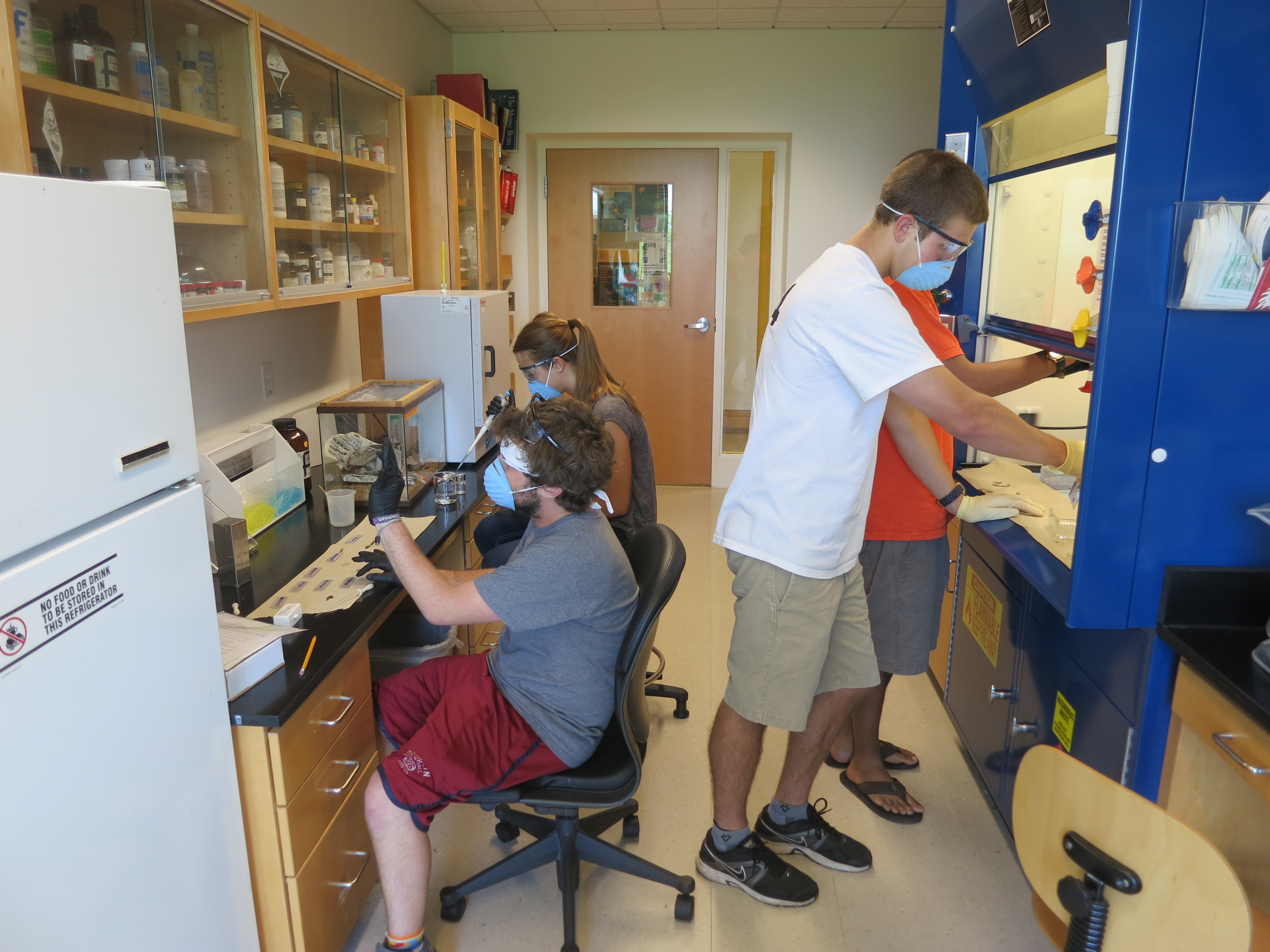
“Got milk?” For a group of Hamilton student researchers, the well-known slogan might be modified to “Got calcium?” The most abundant metal in our bodies and a valuable component of milk, calcium serves functions well beyond building strong teeth and bones. Hamilton research students, working with Douglas Weldon, the Stone Professor of Psychology, are examining how our mental processes depend on calcium. The compound performs lesser known, but essential, roles in blood clotting, chemical signaling and action potential firing.
Daniel Lustberg ’14, Christopher Holm ’15, Freymon Perez ’14 and Stephanie Hruza ’16 are researching calcium-binding proteins, like calretinin and calbindin, in rats to find how elevated synaptic stimulation in brains affects our dopamine chemical pathway. Dopamine is a central compound involved in the brain’s reward circuitry, the connections responsible for humans and animals experiencing pleasure. The binding proteins are also necessary for regulating many other signaling enzymes that regulate our bodies. Irregular dopamine production results in degenerative disorders like Huntington’s and Parkinson’s disease.
Cells communicate motor and cognition information by firing signals between neurons. They hypothesized that increased stimulation should enhance calcium-binding protein synthesis. The group is artificially stimulating this communication in rat brains and studying how the transmission efficiency increases with practice, also known as longterm potentiation (LTP). Holm described LTP and said, “It’s like learning how to ride a bike for cells.” Once the cells learn to fire signals more efficiently, they do not lose their competence over time.
“The shock treatments are similar to what happens during the natural activation of neural circuits,” Lustberg said. They are simulating a realistic level of activation, like what occurs after eating food or experiencing other reward stimuli. Similar work has been done with the hippocampus, but this group is examining the ventral tegmental area (VTA), a brain region associated with the dopamine reward circuitry.
Slices of the brain thinner than a strand of hair are collected, stained with antibodies and viewed under a microscope after the experiment. A cryostat cooler is used to freeze and maintain cell samples, which are needed to observe the brain’s conformational changes in response to stimulation.
The group is also investigating prepulse inhibition (PPI), a neurological observation where an organism has smaller reactions to stimuli when a weaker stimulus occurs before it. For example, you may be startled by a loud noise, but your reaction would be diminished if a quieter sound preceded it. Many bodily processes and chemicals are being studied within this research, but the phenomenon’s causes are unknown.
For their procedure, the group injects rats with various drugs before performing trials with and without prepulses. They then measure how high each rat jumped in response to the stimuli. Some rats were unruly or shocked by the experimental environment, and Hruza recognized that the group needed to make the animals comfortable to remove confounding variables.
Perez stressed how this concept of PPI is important in fundamental brain science and fosters numerous broad applications. Hruza and Perez are especially interested in the fact that schizophrenic patients have a PPI deficiency. If the group finds what neurotransmitter is responsible for this deficit, they will develop a better understanding of schizophrenia and explore potential drug treatments.
This experience has reaffirmed the group’s interests in animal research. Lustberg will continue similar work for his senior thesis, and Perez hopes to uncover calcium’s role in other degenerative diseases.
Holm is a graduate of Brighton High School (N.Y.), Lustberg is a graduate of Weston High School (Conn.), Perez is a graduate of Ethical Culture Fieldston School (N.Y.) and Hruza is a graduate of Mary Institute and St. Louis Country Day School (Mo.).
Posted July 26, 2013
